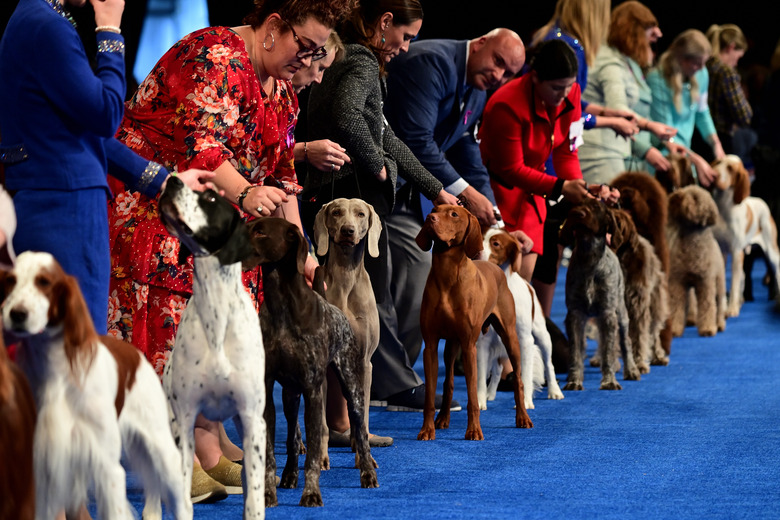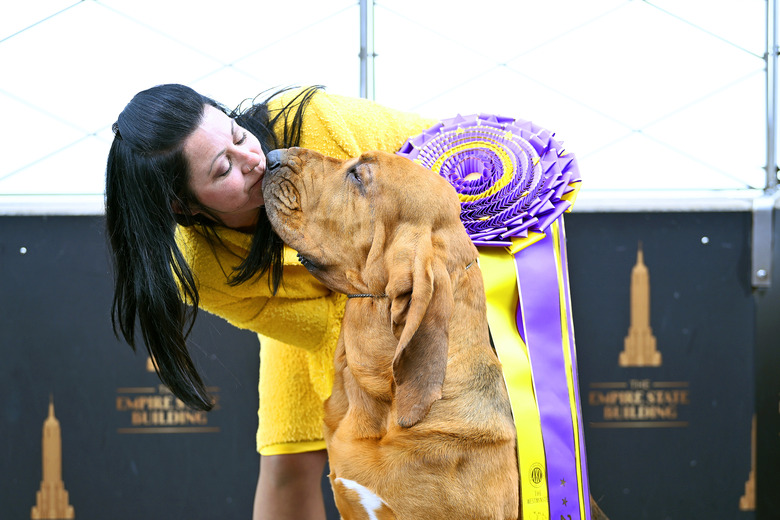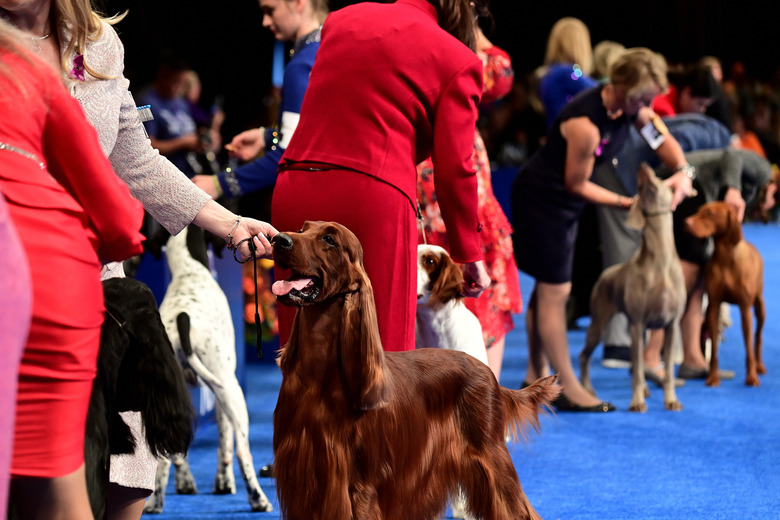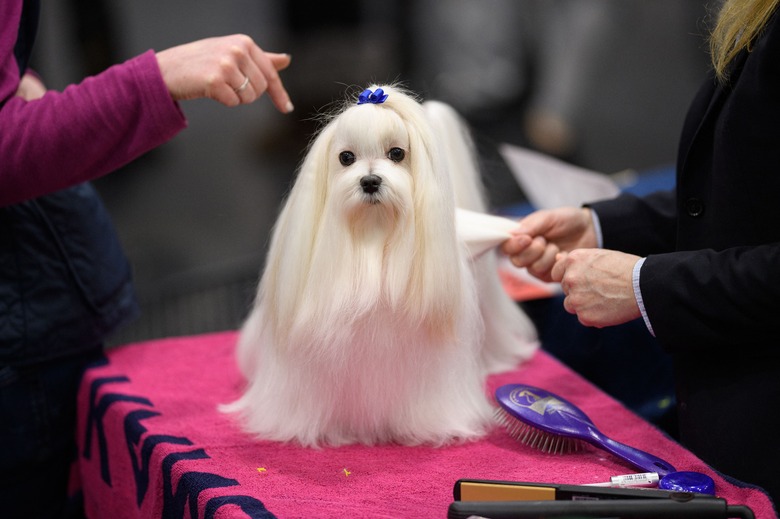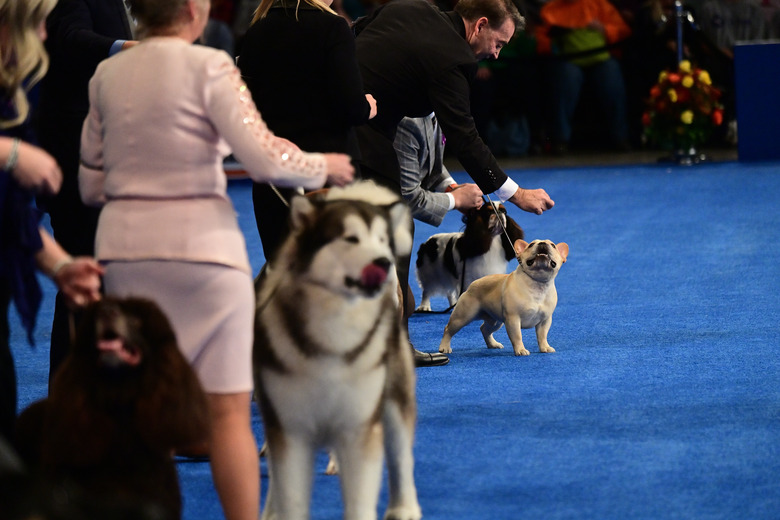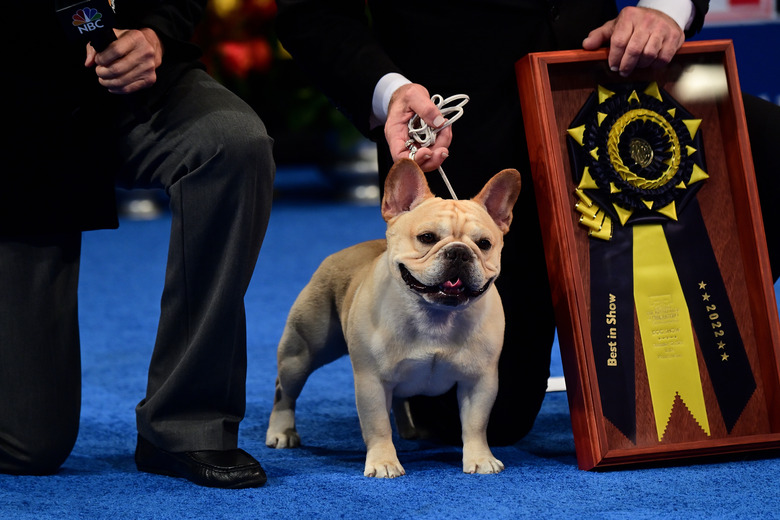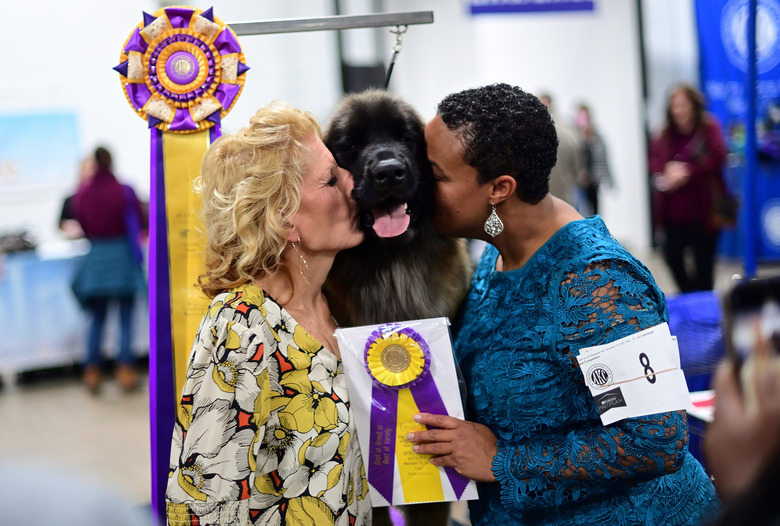How Do Dog Shows Like The Westminster Kennel Club And National Dog Show Work? Grooming And Training Is Serious Business
Dog shows are a big umbrella category that can include all types of shows including agility competitions, scent work trials, and obedience trials which are open to mixed breed dogs and purebred dogs. However, when most people think of dog shows they think of dog shows like Westminster Kennel Club dog show, and the National Dog Show which are large televised dog shows.
Dog shows like this are called conformation. In conformation classes, purebred dogs are evaluated by a judge. Many people think of these dog shows as a beauty contest, but dog shows aren't judging if dogs are pretty. Dog shows evaluate the dog's overall structure, physical conformation, appearance, and temperament and how that dog compares to what is ideal for their breed. The dog most closely aligned to the breed standard will be awarded top dog.
The journey to Best In Show
The journey to Best In Show
A dog's journey to winning a coveted "Best In Show" award starts with competing for best of breed. At this level all dogs of one breed compete against each other with the judge looking for the best representation of each breed. The winner of each breed at a dog show then competes against other dogs in their group. With the American Kennel Club, dog breeds are broken out into seven groups: the sporting group, the hound group, the terrier group, the toy group, the working group, the herding group, and the non-sporting group.
At this level the different breeds of dogs in that category compete against each other. This is where dog shows can start to get confusing. For example, how can the judge possibly compare a Dalmatian to a Chow Chow? Both dogs are in the AKC non-sporting group, but the judge isn't judging these two breeds against each other. Rather, the judge is looking at how closely the Dalmatian compares to the Dalmatian breed standard and how closely the Chow Chow compares to the Chow Chow breed standard.
The dog who most closely aligns with their breed standard will be the winning dog in the group. The dogs that win the group then move onto the final category: Best In Show. For Best In Show, there will be a dog from all seven groups and those dogs will be competing for the top prize. At the Best In Show level, the judge evaluates each dog based on their breed standard. The dog who most closely aligns with its breed standard is the dog who will be awarded Best In Show!
Getting dogs ready for dog shows
Getting dogs ready for dog shows
Dog shows are organized across the country by local dog breed clubs and the kennel clubs in the area. Some people handle their own dog as a "owner handler," and other people hire professional handlers to show their dog at club shows. A lot of time and effort goes into getting dogs ready for dog shows. From the moment they are born breeders start to prepare their puppies for a future in dog shows.
To prepare dogs for an upcoming dog show, dogs are taught from just a few months old how to be presented in the ring, and how to be comfortable in a dog show setting. This may look like entering match shows (practice shows) put on by local dog clubs and attending dog training classes to teach dogs to focus around distractions. Dogs also need to be groomed for the show, so they must be comfortable being touched all over by a groomer. A big part of getting ready for a show involves travel. Dogs who show regularly often travel long distances with their handlers to get to shows where they will compete. It's not unusual for show dogs to spend large amounts of time on the road staying in hotels or traveling in RVs to shows.
Grooming requirements for a dog show
Grooming requirements for a dog show
Dogs going to compete in a conformation dog show will all be groomed and looking their best. The specific breed of dog will determine how much grooming a particular dog needs to have. Each breed's standard dictates how a dog should be groomed, the length of their fur, and how that fur is arranged. Short coated and hairless breeds of dogs will require significantly less grooming before a dog show than a dog breed with long fur.
Experienced dog show handlers use a variety of tricks for keeping dogs groomed and clean before going into the ring. This includes snood scarfs that wrap around a dog's head and ears to keep them from falling into water bowls or getting dirty while eating. Dog shows have indoor bathroom areas setup where exhibitors can potty their dogs. These indoor potty spots are filled with clean wood chips. Relieving themselves in these potty areas prevents show dogs from getting wet or muddy once they are groomed for the show ring. Don't worry, when the show is over these show dogs can run around and get dirty like any other dog!
Training a dog for dog shows
Training a dog for dog shows
The most important form of training for dogs entered in dog shows is socialization. These dogs need to be comfortable being around large groups of people and dogs. Show dogs also need to be comfortable with loud sounds, as well as walking on different surfaces. To be comfortable at a dog show, it's important to teach dogs to focus on their handler and ignore all the distractions around them including other dogs being nearby and be comfortable with being groomed.
Handlers use positive reinforcement to work with their show dogs. Handlers always carry "bait," meaning treats, into the ring with them and dogs are rewarded with treats while they are competing. Show dogs must also learn to be comfortable being handled by strangers. At a dog show, the judge will put their hands on dogs to evaluate a dog's structural soundness, making sure testicles are present for male dogs. Show dogs also need to be trained to walk nicely on a leash at different speeds so a judge can see how the dog moves.
Dogs also learn to be stacked, which means positioning their body so their structure can be observed by the judge. Show dogs also need to learn to stand still on the ground for large dogs, and on a table for small breeds to be examined by the judge. Dogs who compete in other dog sports/performance events at dog shows like scent work, rally obedience, agility and other sports will need significantly more specialized training.
Here are some additional questions people often ask if they are curious about how dog shows work:
How do they pick winners at dog shows?
How do they pick winners at dog shows?
Winners at breed shows are selected by the judge based on how closely each dog corresponds with their breed standard. Judges are experts on all breeds of dogs and the specifics of each breed's standard which includes how the dog is supposed to look, act, and move. Judges are evaluating these dogs as "breeding stock," meaning all dogs entered need to be unaltered as if they are successful, they likely will be bred to produce the next generation of purebred dogs.
What do you get if your dog wins a dog show?
What do you get if your dog wins a dog show?
The big prize at dog shows are ribbons. Ribbons can be a simple strip that will have the dog show's name on it, or they can be elaborate rosettes. Generally, the bigger or more important the show/win, the larger and elaborate the ribbon will be. Some dog shows also offer trophies or plaques to dogs who win. In addition to these prizes dogs are competing to win points towards titles, like the conformation Champion title. Earning these titles become part of a dog's permanent record with the American Kennel Club (AKC) or United Kennel Club (UKC).
Do dogs know when they win a dog show?
Do dogs know when they win a dog show?
Successful dog shows love spending time at dog shows with their handlers. These dogs are having fun when they compete regardless of if they win or lose, they are just happy to be there. That said, dogs are keen observers of their people, and if a dog wins and their handler gets excited and is being congratulated, these dogs know they have done an extra good job and are the best dog in the show.
Do dog shows pay money?
Do dog shows pay money?
No! One of the big misconceptions about dog shows is that people must be winning money. In reality, people who are showing their dogs are spending thousands of dollars on dog care to enter their dogs into shows, but there are no cash prizes or money to be won at dog shows. Dogs are competing to earn titles, and the only prizes are ribbons and/or trophies. There are no cash prizes at dog shows.
